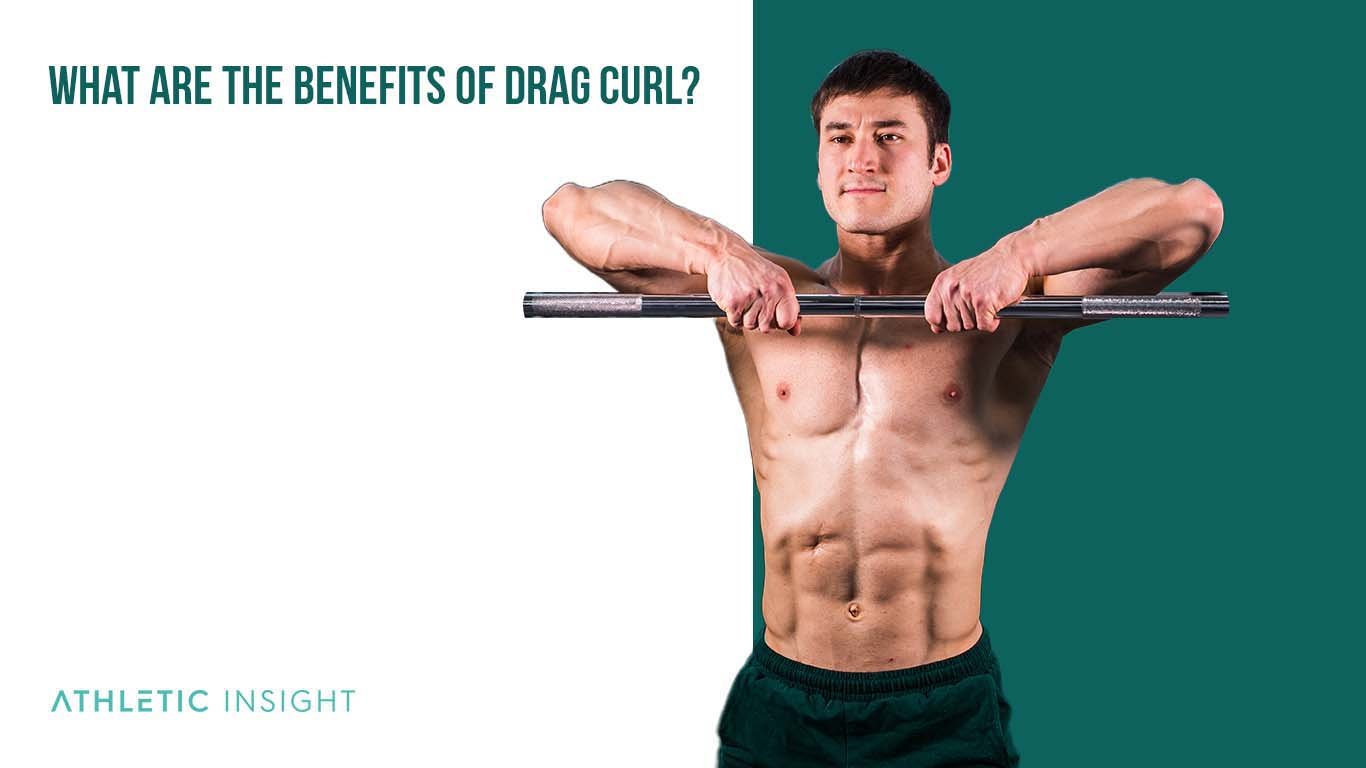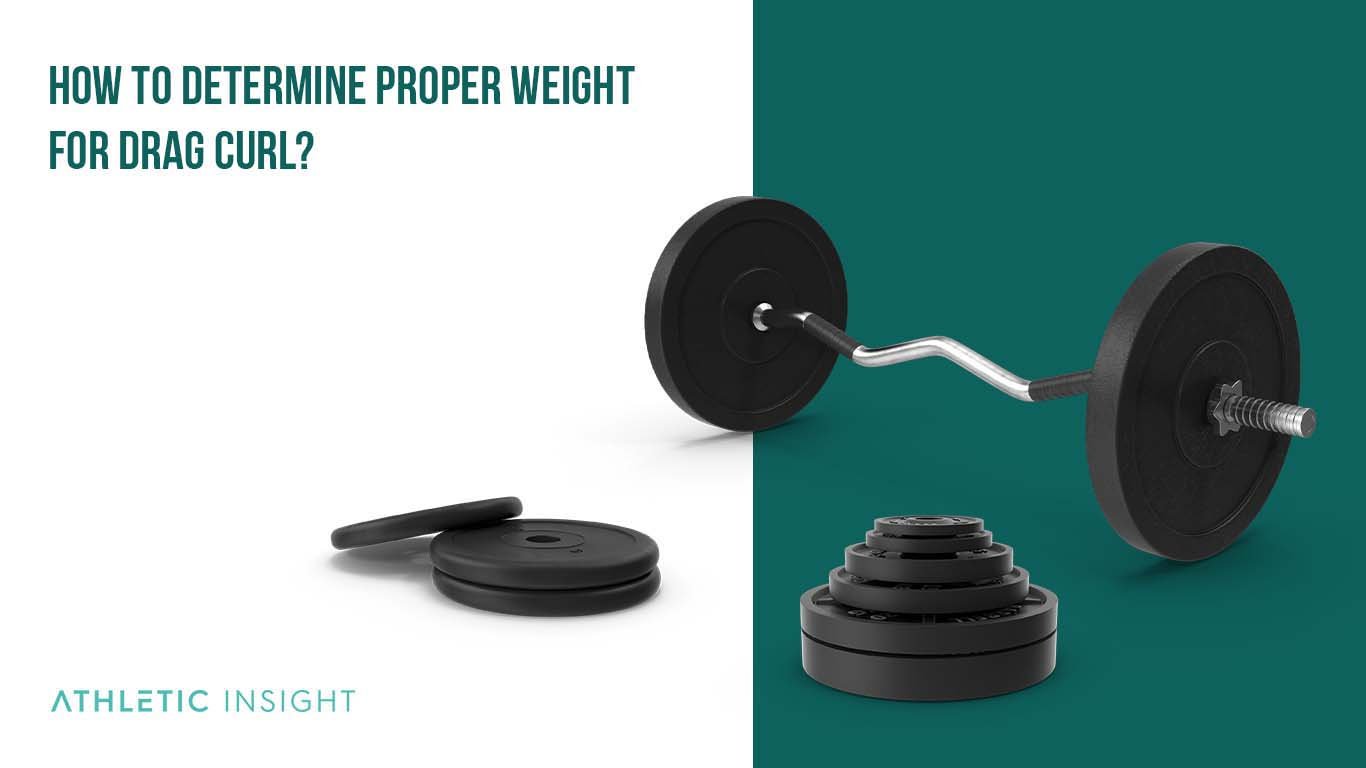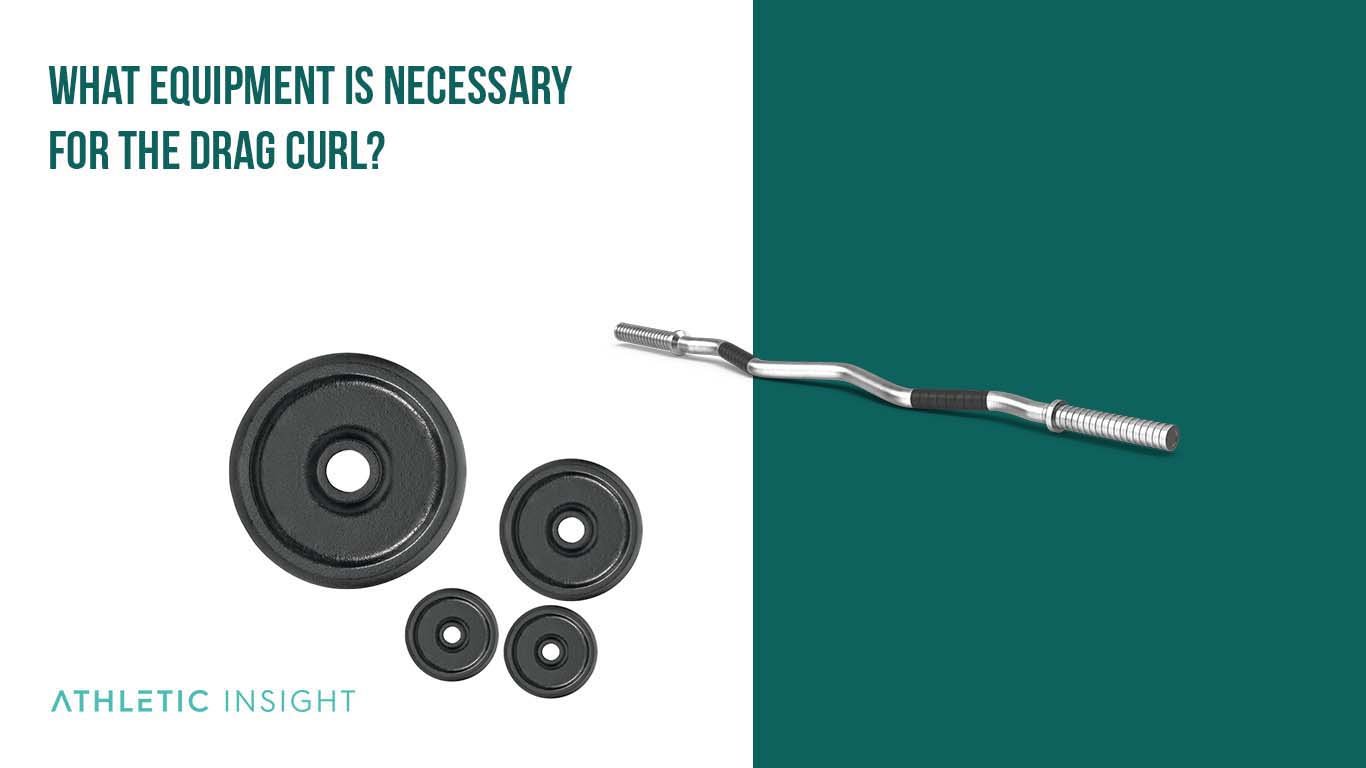A drag curl is a compound weight training exercise that targets the biceps brachii. The main benefits of the drag curl are increased strength and definition of the biceps and improved grip strength. While many bicep workouts also target the shoulders, the drag curl focuses more on isolating the bicep.
To perform the drag curl, you take the barbell or dumbbells and place them shoulder-width apart. Then, you slowly bend your elbows while pulling them backward, bringing the weight up towards your chest. You should be flexing the bicep during this stage while also keeping the weight close to your body. Once you bring the weight up 90 degrees, slowly bring it back down to the starting position.
Traditionally, the drag curl is performed with a weighted barbell, but there are variations that utilize dumbbells, bands, and machines. There are also variations that utilize reverse grip. In fact, the barbell, dumbbell, bands, and machine drag curls can be done with your wrists pointing downwards as opposed to upwards. This targets your biceps but also the forearm.
To master the drag curl, it is critical that your form is perfect. Common mistakes include using too much weight, swinging the arms, and bringing the elbows forward. These common mistakes can lead to injuries such as torn biceps and joint issues. However, if you can follow the proper drag curl techniques, this exercise offers more benefits than risks.
How to Perform Drag Curl with Proper Form
Proper form means maintaining correct posture and physical movement during exercise. Learning to perform a drag curl properly involves being aware of your form before, during, and after this biceps exercise.
To dominate drag curl exercises, you’ll need to do the following.
- Get a barbell and some weights for this workout.
- Hold the barbell with your hands slightly wider than shoulder-width apart for the first set.
- Straight-backed standing stance. Activate your core.
- Bring your elbows and shoulders back slightly as you curl the barbell upwards.
- Return to the beginning position by squeezing your biceps hard at the top.
- Repeat until you’ve completed the required amount of reps.
Failing to adhere to these form rules can result in injury and reduce the beneficial effects of drag curls. This form functions to keep individuals safe from the shoulder, back, and arm injuries while also increasing the effectiveness of the barbell drag curl exercise.
What Are the Benefits of Drag Curl?
Those looking to build more muscular forearms and biceps may find that drag curl exercises are especially beneficial. Understanding the benefits of drag curls is an excellent way to determine whether this exercise might be suitable for you.

Here are the benefits of drag curl exercises.
- It gives you strength and muscle gain. Drag curls cause microscopic muscle tears in the biceps and forearms. When these tears heal, those muscles grow stronger.
- Reduces the chance of getting an injury. Performing a drag curl increases upper body strength, reducing the chance of suffering an injury in that area.
- It strengthens the entire upper body, especially your shoulder. Drag curls make the upper body more muscular. Like most bicep workouts, the shoulder and forearm muscles also benefit from this exercise.
- Drag curl benefits the posture. The spine is kept straight during a drag curl, helping a person’s posture improve and remain healthy.
- Drag curl improves the aesthetics of the body. Drag curls are a strength-building exercise that can improve the body’s aesthetic appearance.
What Are the Mistakes for Drag Curl Form?
The most common mistakes for drag curl form are listed below.
- Starting with elbows straight. When performing a drag curl, the elbows should be bent and pushed behind the hips.
- Pushing elbows forward. Individuals should avoid moving the elbows forward during a drag curl, as it places strain on the elbows instead of the forearms and biceps.
- Releasing tension when moving the barbell downward. Letting the barbell fall quickly after pulling it up can increase your risk of developing an injury. For that reason, it’s crucial to lower the barbell slowly and in a controlled manner during drag curls.
- Swinging the arms. Using your shoulders or upper back to create momentum and swing the arms forward during a drag curl reduces the exercise’s effectiveness and increases the risk of injury.
How to Determine Proper Weight for Drag Curl?
The proper weight for drag curl exercises varies from person to person. Typically, a person’s current muscle condition and weightlifting limit determine the appropriate weight for drag curls.

Individuals that haven’t performed drag curl lifts in the past or who are new to strength training will want to start with light weights (5lb to 10lb)or a weight-free barbell. When performing drag curls, fitness enthusiasts and weightlifters who lift much more may wish to use 25lb or 50lb barbell weights.
A general rule of thumb is that individuals should be able to maintain correct posture and form during a drag curl. If they’re struggling to do so, the weights on the barbell may be too much.
Which Muscles Are Involved While Performing Drag Curl?
Three muscles are involved while performing the drag curl exercise. Here is a summary of the muscles involved in performing drag curls.
- The biceps brachii. Drag curls primarily affect the biceps brachii (also simply called the biceps). Performing a drag curl can strengthen the biceps and help them grow larger.
- The brachioradialis. The brachioradialis is a large muscle located in the forearm, near the elbow. Drag curls work this muscle, keeping the forearm stable and strong.
- The brachialis. The brachialis is a deep muscle located in the forearm. It’s part of the flexor group of forearm muscles. Drag curls can strengthen this muscle, making it easier to flex the arm at the elbow and support weight with the forearms.
What Are the Drag Curl Variations?
The drag curl variations are alternative methods of performing drag curls. Some drag curl variations utilize non-traditional drag curl workout equipment, like dumbbells. Other drag curl variations change the position of the hands, putting more strain on the forearm muscles.
The dumbbell drag curl variation follows the same movements as standard barbell drag curls but requires dumbbells instead of barbell weights. The cable drag curl variation utilizes a weight machine with a t-bar handle and also follows the exact movements of a standard barbell drag curl.
The reverse of hammer grip drag curl variation uses a barbell and weights, but instead of gripping the bar with the wrists pointed upward, the person exercising holds the barbell with the wrists pointed toward the ground.
What Equipment is necessary for the Drag Curl?
A handful of workout equipment pieces are necessary to perform the drag curl exercise. Here is a list of the essential components of equipment for best drag curl.
- A barbell
- Barbell weights

A Smith machine is an optional but practical tool for performing barbell drag curls. They keep barbells vertical, reducing unintentional strain on the shoulders and back. You can also use dumbbells, bands, and machines.
What Are the Drag Curl Related Facts?
There are several interesting facts about drag curls and their impact on the body. Here are a few notable drag curl related facts.
- Drag curls strengthen both the short and long heads of the biceps brachii.
- The drag curl exercise also strengthens the forearm muscles, primarily the brachioradialis.
- Drag curls don’t activate the deltoids, reducing the risk of injuring your shoulders and upper back.
- The drag curl exercise requires a barbell and weights and is often called the barbell drag curl.
Does Drag Curl Affect the Hormones?
Yes, drag curl affects the body’s release of hormones. Strength training can trigger the brain to release anabolic hormones, including testosterone. Insulin-like growth factor (IGF-1) is also a hormone released during drag curls.
These hormones are designed to repair minute muscle tears, encouraging rapid healing and increased muscle mass. These hormones ensure that drag curls strengthen the affected muscles (biceps).
Is Drag Curl Practiced Within CrossFit?
No, drag curls are not a part of CrossFit workouts. Instead, burpees, lunges, squats, and push-ups are typical CrossFit exercises.
Is Drag Curl Dangerous?
No, the drag curl is not dangerous. That said, drag curls can be risky when performed with hefty weights. A Smith-machine drag curl is far safer, as it restricts a barbell’s movement, ensuring that each lift is entirely vertical.
Is Drag Curl Push or Pull?
Drag curl is a pull exercise. To perform this exercise, you’ll need to lift upward on a barbell, curling your arms slightly toward yourself. As such, drag curl involves pulling weight toward the body.
Is Drag Curl Essential?
Yes, drag curl is essential when attempting to strengthen the biceps. Unlike other barbell lifts, the drag curl utilizes the forearm and biceps muscles instead of the deltoids and triceps.
Those looking to increase their bicep muscle mass will want to perform drag curls as part of their workout routine.
Is Drag Curl a Compound Exercise?
Yes, drag curl is a compound exercise. Compound exercises work out several muscle groups at once.
Drag curls exercise the biceps, forearms, and the brachialis elbow flexor. Because it works out multiple muscle groups, it’s considered a compound exercise.
What Can Replace Drag Curl?
A regular curl can replace the drag curl exercise. A standard bicep curl also strengthens the biceps and forearms, just like a drag curl.



